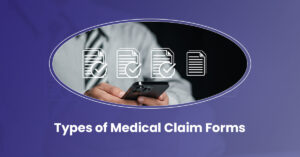In healthcare, medical billing and coding isn’t always easy, so we turned to the experts for some medical billing and coding advice to ensure you’re not wasting money. With certified billers, coders, and best-in-class revenue cycle management processes, BellMedEx helps healthcare providers improve financial performance.
Medical billing and coding companies submit claims to health insurance companies to compensate healthcare providers for services rendered to patients. Medical billing ensures that healthcare providers are paid for their services by billing both patients and insurance companies. Medical providers are compensated; ensuring timely, accurate, and complete reimbursement, which is critical to the success of your medical practice. Medical coding companies convert a patient’s medical history of diagnoses and treatments into an alphanumeric shorthand code that healthcare providers and insurance companies can understand. Each diagnosis and medical procedure has a code, which works for calculating medical costs later. The medical biller takes this information and files a billing claim to request payment from the patient’s insurance company after the patient’s chart has been translated into the correct code. The biller determines how much the patient owes after insurance has been deducted and the claim has been evaluated.
For efficient reimbursement, accurate medical coding companies are required. The accuracy of a medical practice’s medical billing and coding can improve its financial health.
1. Make Patient-Friendly Medical Billing Statements
Patients are likely to be confused by the medical billing process, even though medical practices and hospitals are aware of its complexity. Expectations in the industry have shifted so that providers must now take a patient-centered approach to this process. Hence, it’s more important than ever to educate yourself on how to stay accessible.
2. Maintain a Clean Claim Rate of at Least 95%
The clean claim ratio shows the average number of claims paid on the first submission for your medical practice. In an ideal world, every provider would strive for a percentage of over 95%, but what matters most is the meaning behind the number. The lower the percentage of clean claims, the less time your staff will spend attempting to identify denials.
3. Payer Reimbursements Analysis
Many medical practices fully trust in payers to reimburse them the entire bill for each claim they submit. Regrettably, this isn’t always the case. Payment discrepancies are more common than you might think. By devoting resources to analyzing payment accuracy, you can reduce revenue loss while also gaining valuable insight into your practice’s revenue management cycle data.
4. Take Control of your Receivables
Do you keep track of your receivables regularly? Do you ever find yourself in a time crunch to respond to a denied claim? You might rethink how you handle contracts and receivables. In the healthcare industry, coding changes happen quickly, and there’s no better time to get ahead of potential problems.
5. Return to Revenue Cycle Management’s Basics
Are you new to adopt revenue cycle management? The first step is to have a consistent cash flow. Even if you’re well-versed in the intricacies of medical billing and coding, it’s always a good idea to review your basic best practices to ensure you haven’t gone off the rails.
6. Submit Accurate Claims in a Timely Manner
Ensure that your medical billing is correct the first time you submit it to avoid wasting time editing and resubmitting inaccurate claims. Up to 80% of medical bills are estimated to contain errors, resulting in weeks of editing, resubmission, and reimbursement delays for providers. Filling out claims correctly and avoiding common errors like incorrect patient or insurance information and duplicate claims save time and money.
7. Always Look for Ways to Improve
Your healthcare practice will continue to grow if you continue to look for ways to improve. Because the healthcare industry is always changing, finding new ways to improve the medical billing process will help to increase revenue. Apart from staying up to date on current medical billing regulations, tracking performance is an important way to identify inefficiencies and improve efficiency. Tracking performance using key performance indicators (KPIs) aids in determining the accuracy and efficiency of previous efforts and identifying areas for improvement.
8. Consider the Latest Laws and Regulations
It’s critical to be aware of the current medical billing rules in order to ensure best practices in medical billing and coding. Staying informed about changing regulations can help you create a streamlined process that avoids rejections and medical billing edits. Failure to stay current on medical billing rules can have a significant impact on your medical practice’s cash flow.
9. Checklist of Proven Coding and Billing Best Practices
Several top-performing medical coding companies identify their best coding and billing practices to provide some guidance. You can start optimizing your medical billing and coding process with greater confidence with these insights. You should use your software’s month-end close process if it exists. Your month-end closing reporting process should take place once a month.
- Weekly billing for patients is recommended.
- Prepare Billing data for processing on time.
- If your data is hosted on-premises, use web-based backups.
- Make sure you’re using all of the payer remittance options.
- Complete the eligibility verification process before the patient’s appointment.
- Keep an eye on your collection ratio and compare it to the previous two years to spot any unexpected changes.
10. Metrics to Consider when Evaluating your Medical Billing and Coding Processes
The best medical billing metrics give you a quick picture of your practice’s financial health in various areas. Identifying these KPIs is a crucial first step in putting medical billing best practices into action. Here’s a quick overview of the most important metrics to pay attention to various areas of your practice.
Rate of Net Collection
Few metrics are more important than your practice’s net collection rate when evaluating your medical billing process. The net collection rate compares the amount of money you receive to the amount owed for services rendered. It can ensure the success of nearly every aspect of your practice. You can almost instantly understand and quantify your responses to questions like these if you have a good understanding of your net collection rate.
- Are you providing valuable treatments and services to patients and payers?
- Are you effectively managing your revenue cycle and medical billing operations?
- Are you keeping track of unpaid invoices?
- Are your patients aware of their financial responsibilities?
- Are you keeping an eye on any troubling trends among your payers or patients?
Average Days in AR
You can spot whether your team is slow to submit claims to payers by knowing the average number of days between seeing a patient and collecting what you’re owed. You’ll also know how much money you need to cover your operating costs until reimbursements arrive.
Payers reimburse claims at their own pace, so a delay in accounts receivable isn’t always your staff’s fault. Whatever the case may be, it’s critical to ensure that your claims aren’t sitting in AR for months. It’s critical to keep track of days in AR after the 60-day mark to ensure no claims fall through the cracks.
Per-visit Collections
Measuring your collections per visit on a month-by-month basis and comparing the rates to the types of appointments you took during that time can help you optimize your scheduling around the areas that drive the most revenue for your practice.
Variation in Contractual Terms
You could be losing money without even realizing it if your payers aren’t reimbursing you at contracted rates. Keeping a close eye on contractual variance can help you figure out if you’re being underpaid and reveal whether the problem is due to denied claims or troubled payer relationships.
Management of Denials
While a high rate of properly submitted claims is ideal, billing errors can still occur even with a refined medical billing and coding process. When bills are denied, it’s critical to have a documented denial management process in place to ensure full and timely reimbursement and identify problems so they can be fixed in the future. You can better track irregularities and optimize your process by analyzing denial reasons.
Year-End Reviews
Daily, weekly, or even monthly metrics may not provide enough information to make informed decisions. Running quarterly AR reports gives your practice the insight to improve medical billing and coding practices. Aside from quarterly reviews, conducting year-end reviews of all of the above metrics provide the most comprehensive performance evaluation for your practice. A well-documented annual review of your reports can provide unprecedented clarity into your practices and identify areas, resulting in increased accuracy.
Trust the Experts at Bellmedex for Medical Billing and Coding services
Your medical practice can maximize revenue and efficiency by following these coding and billing best practices. If you use a third-party vendor for medical billing and coding, keep in mind that the rate they charge isn’t the only thing you should know. A good medical billing company has the experience and foresight to keep your revenue cycle management running smoothly so you can focus on your patients. Check out your billing vendor to see if they have what it takes to be a trusted partner in your practice’s success.
BellMedEx’s mission is to provide expert medical billing services that work seamlessly with your practice management software (PMS) or free electronic health records (EHR). That’s why our experts have a broad range of expertise and extensive experience working with common software to best serve you and your practice without requiring you to abandon all of your existing processes and resources.





